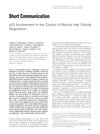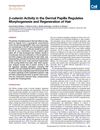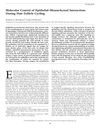Cyclosporin A-Induced Hair Growth in Mice Is Associated with Inhibition of Calcineurin-Dependent Activation of NFAT in Follicular Keratinocytes
June 2003
in “
American Journal of Physiology-cell Physiology
”

TLDR Cyclosporin A helps mice grow hair by blocking a specific protein activity in skin cells.
The document from June 1, 2003, presents a study on the effects of Cyclosporin A (CsA) on hair growth in mice, revealing that CsA promotes hair growth by inhibiting the calcineurin-dependent activation of NFAT in follicular keratinocytes. The study showed that CsA treatment led to dose-dependent hair growth in nude mice and delayed the catagen phase in C57BL/6 mice. It also altered the expression of various genes and proteins associated with hair follicle regression and differentiation, such as increasing the Bcl-2/Bax ratio and decreasing p53 expression. These findings suggest that CsA could be a potential treatment for hair growth disorders by delaying keratinocyte terminal differentiation and catagen induction. The study involved groups of three mice, indicating a relatively small sample size.






